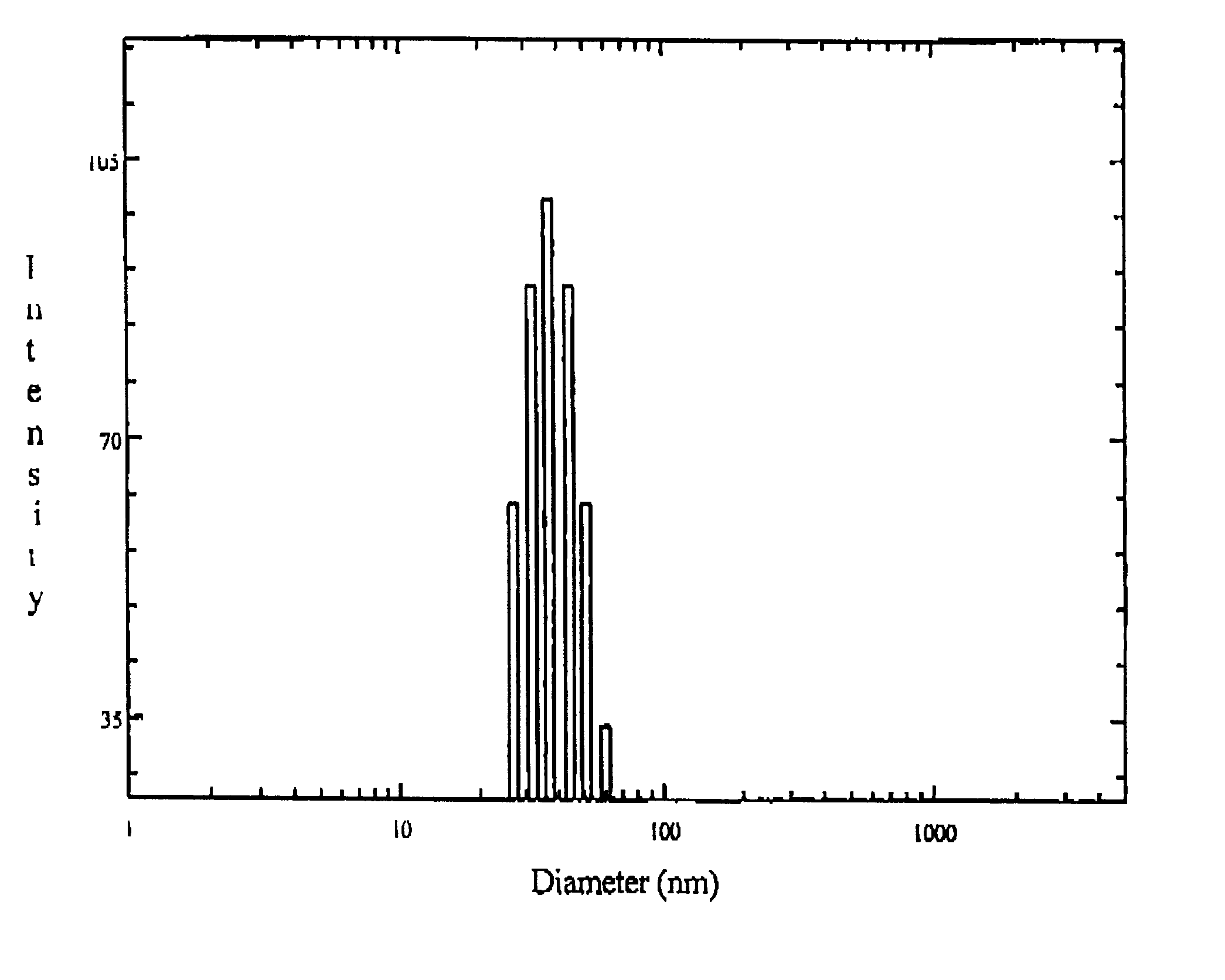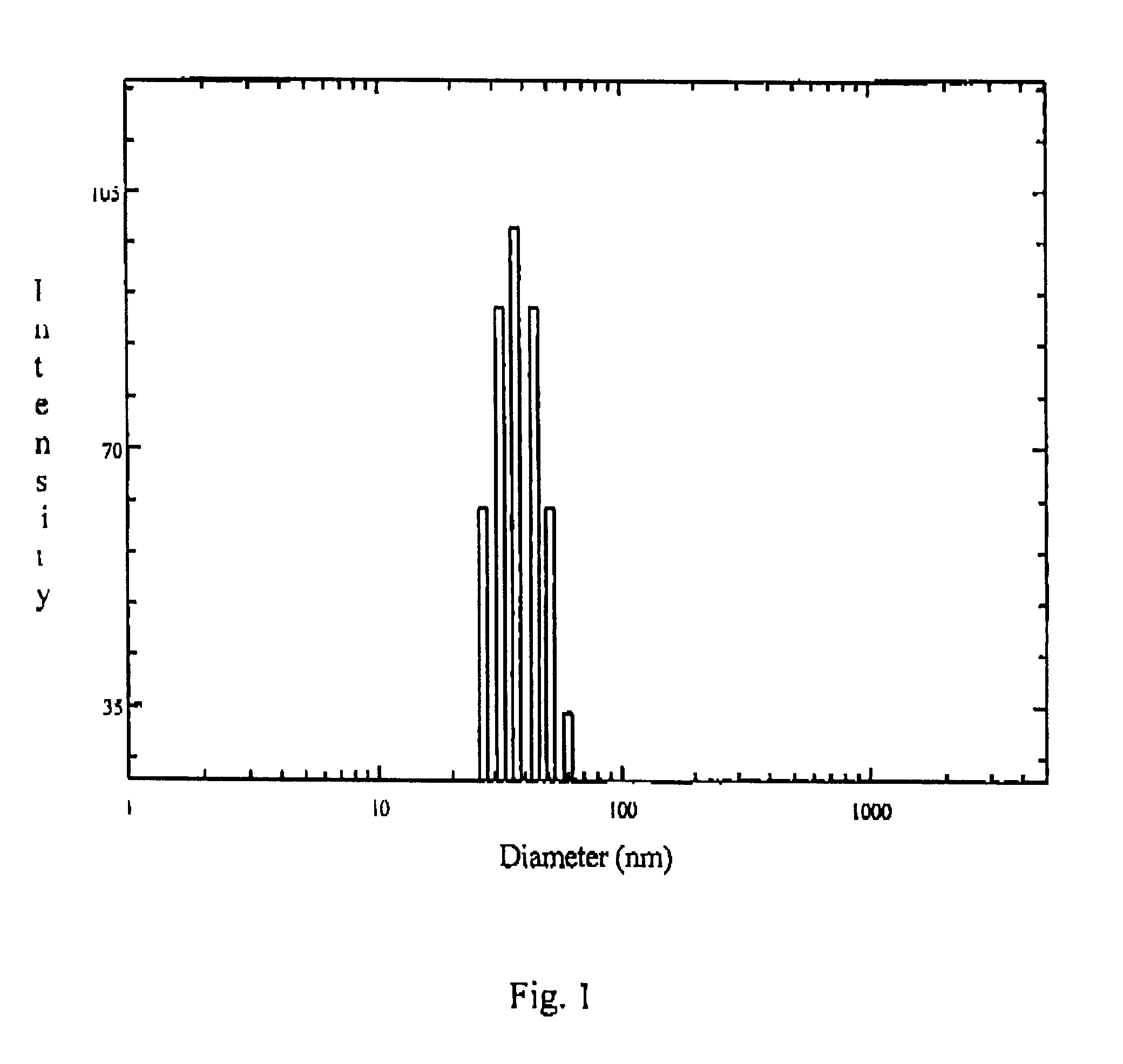Sustained release and long residing ophthalmic formulation and the process of preparing the same
a technology of ophthalmic formulation and long-lasting ophthalmic formulation, which is applied in the direction of biocide, synthetic polymeric active ingredients, amide active ingredients, etc., can solve the problems of limited ocular absorption, rapid and extensive precorneal loss caused by drainage and high tear fluid turn, and reduce the ocular absorption rate. , to achieve the effect of toxicologically much safer
- Summary
- Abstract
- Description
- Claims
- Application Information
AI Technical Summary
Benefits of technology
Problems solved by technology
Method used
Image
Examples
example 2
Preparation of Polymeric Nanoparticles Containing Indomethacin:
In 100 mg of the lyophilized powder of the polymeric micelles nanoparticles, an alcoholic solution of indomethacin ([Indomethacin]=33 mg / ml) was added with constant stirring to get clear solution of polymeric micelles containing the drug of desired concentration dispersed in aqueous buffer. Maximum 10% w / w of the drug could be dissolved in polymeric micelles at room temperature. The drug loaded polymeric micelles was then lyophilized to get dry powder for subsequent use.
example 3
Preparation of Polymeric Micelles Containing Nimesulide:
In 100 mg of dry powder of polymeric micelles, an alcoholic solution of nimesulide ([nimesulide]=10 mg / ml) was added with constant stirring to get clear solution. Maximum 8% w / w of nimesulide could be dissolved in polymeric micelles at room temperature. The drug loaded micelles was then lyophilized to get dry powder for subsequent use.
example 4
Measurement of Particle Size by Dynamic Light Scattering Experiment:
The drug loaded lyophilized powder was dissolved in aqueous buffer to get about 5% solution. The solution was then filtered through 200 nm Millipore filter and the particle size and size distribution of the polymeric micelles was determined using a Brookhaven B18000 instrument with a B1200 SM goniometer. An aircooled argon ion laser operated at 488 nm was used as light source. The intensity of scattered light was detected at 90.degree. to an incident beam. The measurement was done using a 128 channel digital correlator which derive the time dependent autocorrelation function of the scattered intensity. The size of the particle was calculated from diffusion of the particles using Stoke-Einstein equation.
The particle size and size distribution of ketorolac loaded polymeric micelles nanoparticles are shown in FIG. 1. of the accompanying drawing.
PUM
| Property | Measurement | Unit |
|---|---|---|
| size | aaaaa | aaaaa |
| temperature | aaaaa | aaaaa |
| temperature | aaaaa | aaaaa |
Abstract
Description
Claims
Application Information
 Login to View More
Login to View More - R&D
- Intellectual Property
- Life Sciences
- Materials
- Tech Scout
- Unparalleled Data Quality
- Higher Quality Content
- 60% Fewer Hallucinations
Browse by: Latest US Patents, China's latest patents, Technical Efficacy Thesaurus, Application Domain, Technology Topic, Popular Technical Reports.
© 2025 PatSnap. All rights reserved.Legal|Privacy policy|Modern Slavery Act Transparency Statement|Sitemap|About US| Contact US: help@patsnap.com



